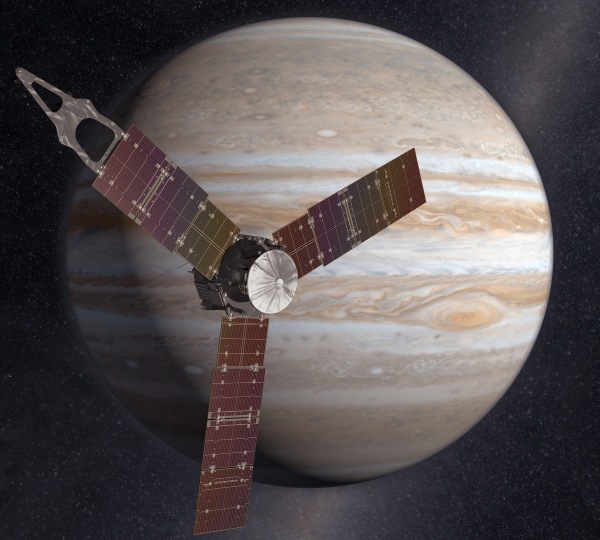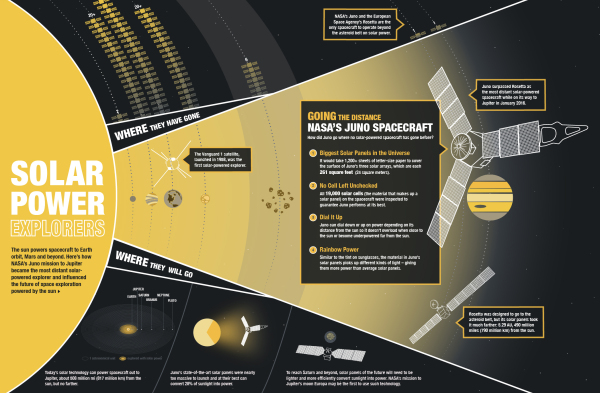NEW YORK TIMES: Ducking through intense belts of violent radiation as it skimmed over the clouds of Jupiter at 130,000 miles per hour, NASA’s Juno spacecraft on Monday finally clinched its spot in the orbit of the solar system’s largest planet.
It took five years for Juno to travel this far on its $1.1 billion mission, and the moment was one that NASA scientists and space enthusiasts had eagerly — and anxiously — anticipated. At 11:53 p.m. Eastern time, a signal from the spacecraft announced the end of a 35-minute engine burn that left it in the grip of its desired orbit around Jupiter. Cheers erupted at the mission operations center at NASA’s Jet Propulsion Laboratory, in Pasadena, Calif., which is managing Juno.
Juno is just the second spacecraft to enter orbit around Jupiter. NASA’s Galileo spacecraft spent eight years there surveying the planet and its many moons. But except for a probe that parachuted into Jupiter’s atmosphere, Galileo did not have the tools that Juno does to delve into what lies beneath Jupiter’s clouds. Jupiter, most likely the first planet formed after the sun, is believed to hold the keys to understanding the origins of our solar system. MORE
Click HERE to enlarge


